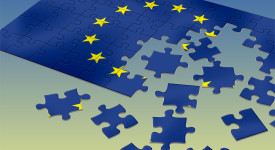In the late 20th and early 21st centuries, the Middle East and North Africa (MENA) region has been the greatest source of global concern about weapons of mass destruction (WMD), forcing action by the international community on the possession, use and/or threat of use of WMD. The regional system is characterized by multidimensional asymmetry while at the same time it is a penetrated system by outside actors behaving as regional states. These characteristics, as well as the nature of the issue of WMD, mean there is the potential for the region to shape the international agenda, though their capacity to defend regional states’ interests is not guaranteed.
Warfare with weapons of mass destruction, as well as WMD control and disarmament efforts, have been limited primarily to the 20th and to some extent the 21st centuries, in spite of the fact that chemical and biological agents and materials have been present practically all through the history of mankind. While they are often mentioned in the collective, weapons of mass destruction are rarely, if ever, considered or discussed together.
Multilateral arms control treaties related to WMD (the NPT, the Comprehensive Nuclear Test-Ban Treaty (CTBT), the CWC and the BTWC) ensure the embeddedness of all state parties in the international non-proliferation order: the shared aim of achieving universality cannot be realized if any state, even the smallest and most peripheral, is not included. The states in the MENA region, with very few exceptions, are parties to, or have signed but not ratified, all these treaties.
Arms control is typically a cooperative exercise, but since the end of the colonial era, there has only been one brief period, that of the Arab-Israeli peace process (1991–5), when the spirit of cooperation proved strong. And even this coincided with the end of the Cold War, the relaxing of superpower competition and the rush for hegemony in the MENA region and elsewhere. It is a generally held notion that security is indivisible. This is especially true in relation to weapons of mass destruction due to their innate dual-use character, their practically limitless capacity for indiscriminate destruction, and the extensive range of their increasingly typical carrying vehicles, ballistic and cruise missiles.
Despite the increasingly complex transformation of the region, the Israeli WMD capability is still non-negotiable. Both the controversy over the Iranian nuclear programme and the dismantlement of the Syrian chemical weapons arsenal seemed to have been solved by international cooperative diplomacy, only to resurface again on the international agenda. Yet, the conference on a Middle East free of nuclear weapons/weapons of mass destruction has been put off indefinitely.
All these regional arms control cases prove that WMD arms control require joint action by the international community, the agreement and cooperation of the UNSC permanent members in general, and the firm commitment and engagement of the USA in particular. The Trump administration so far has not shown any interest in general arms control and disarmament. Yet, President Trump’s “agreements” with Russia and North Korea, not to mention his ultimatum to Iran, are more reflective of the position of a hegemon rather than cooperative security diplomacy, which is at the core of arms control.
‚Weapons of Mass Destruction in the Middle East and North Africa‘ – Working Paper by Erzsébet N. Rózsa – Barcelona Centre for International Affairs / CIDOB.
(The Working Paper can be downloaded here)







